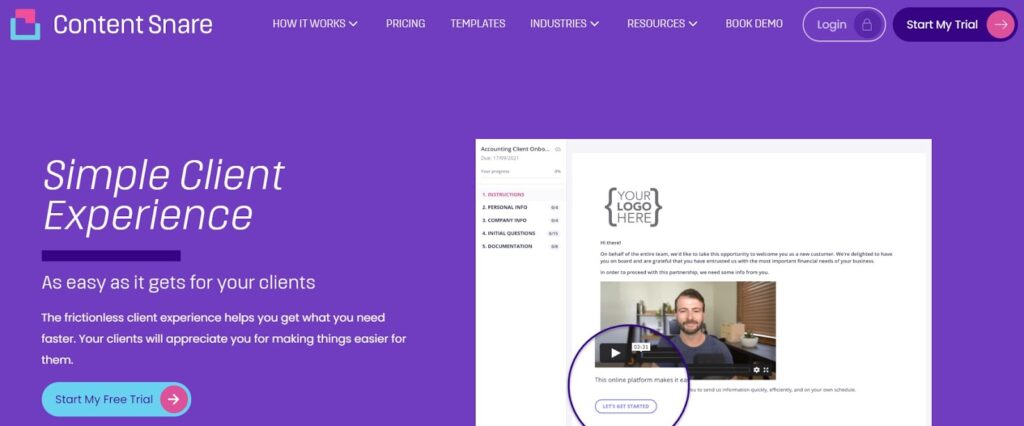Running a SaaS business is more difficult than ever.
Competitors keep popping up, while customers expect you to be more agile and proactive with each passing day. According to the report, 80% of customers claim that the experience a company provides is as important as its services.
That’s why many SaaS businesses now put customer success at the core of their operations. If you’re still struggling to develop a sustainable customer success strategy, read on to learn:
- The basics of customer success
- 7 tips for building great customer success strategies
- Challenges you’ll be facing in this process
Let’s dive in!
Table of contents
1. Build a better onboarding process
2. Personalize the customer experience
3. Educate your customers
4. Support your customers using the right channels
5. Provide ongoing support
6. Analyze your customer success efforts
7. Learn from mistakes
What is customer success?

Customer success is a strategic approach in business that helps users derive maximum value from the product or service they have purchased. For SaaS companies, this means helping your customers make the most of their software from day one.
Though it sounds a lot like traditional support (and frequently overlaps with it), a customer success strategy focuses on building long-term relationships with customers rather than solving one-time issues.
The purpose of customer success teams is to work closely with your customers to track the value they are gaining from the software.
Customer success strategy: 7 steps to success
Before we dive deep into our tips, it’s fair to mention that each company should build a unique customer success program. After all, you and your competitors probably have different business strategies, onboarding processes, resources, and other elements that influence customer success management.
That being said, let’s see our top 7 tips for achieving SaaS customer success.
1. Build a better onboarding process
Onboarding is the most critical element in the entire customer journey. The onboarding experience sets the tone for your relationship with customers, and it can lead to higher satisfaction, retention, and ultimately, success.
But how to get the onboarding process right?
Using a dedicated customer onboarding tool is your best option.
Content Snare, for instance, can help you collect info and design a tailored onboarding questionnaire for each customer. The platform’s personalized forms, automated reminders, in-form conversations, and many other features assist 1000+ companies in gathering data and onboarding their clients.

Magnetic Bookkeeping & Consulting made a whole article on how they use Content Snare to streamline onboarding, so you might as well check that out.
2. Personalize the customer experience
A study shows that nearly 70% of customers expect brands to understand their individual needs.
Personalization is even more important in the B2B realm because users want to feel valued and understood as individuals — tailoring your interactions with them can go a long way in building strong, lasting relationships.
Here’s how a SaaS company can tailor customer experiences:
- Enable users to customize their interface by selecting the features they need
- Send automated notifications based on specific users’ actions
- Provide relevant content and other resources that suit your customer’s role or interests
3. Educate your customers
One of the pillars of a successful customer success strategy is to educate your customers. By providing valuable information and learning resources, you empower your customers to maximize the benefits of your product or service.

Clear and user-friendly documentation is crucial for helping users navigate your product or service. Slack, a popular communication tool, is a great example of this because it offers:
- Extensive documentation
- Video tutorials
- FAQs
- Step-by-step guides
All this helps Slack users to understand and utilize its features quickly, so try and learn from their example.
4. Support users through the right channels
Customer support is critical to the success of your business, so you’ll have to build a knowledgeable customer support team. But there’s one little detail many SaaS companies forget, and that is to figure out their users’ preferred communication channels.
This may vary from one customer to another — some customers might prefer email for more in-depth queries, while others may prefer quick answers via live chat or even social media.
It can also be a multichannel approach, as more than a third of customers now expect to be able to contact the same customer service representative on any channel.
However, responsiveness is key regardless of the channels you provide. That means your customers should never feel like their questions or issues are going unanswered, so you must set clear response time expectations for each channel (and stick to them).
5. Provide ongoing support

Customer success doesn't end when a sale is made or a contract is signed — it's an ongoing process that requires consistent and attentive support.
Most companies assign dedicated customer success managers to their key accounts — they serve as the primary point of contact for the customer to understand their unique needs and/or challenges. You can also provide ongoing support with these actions:
- Regular health checkups to assess your customer's satisfaction level
- Create a customer feedback loop to gather timely insights
- Build dedicated customer communities where they can connect with each other to share best practices or seek assistance
6. Analyze your customer success efforts
Analytics is another important element of your customer success strategy, so we encourage you to create a comprehensive customer journey map to understand all touchpoints customers have with your business.
In addition, focus on the key metrics that will serve as your benchmarks for measuring success:
- Time to Value (TTV)
- Customer satisfaction (CSAT)
- Net Promoter Score (NPS)
- Churn rate
- Customer Lifetime Value (CLTV)
It’s necessary to monitor your KPIs to track the impact of your customer success efforts. Be prepared to adapt your customer success strategy as customer needs and market conditions change.
7. Learn from mistakes
Everybody makes mistakes. It's inevitable that you'll encounter challenges and setbacks along the way, but how you handle and learn from these situations can make all the difference in your business.
After all, mistakes are often valuable sources of information, so you ought to encourage honest feedback from both your customers and your team members. Here are a few tips you could use for learning purposes:
- When a mistake occurs, it's essential to delve deep into its root causes
- Promote knowledge sharing within your customer success team, so that everyone can learn and improve when one team member makes a mistake
Prepare your customer success team for some challenges

The customer success process is neverending, and your team will surely be facing some challenges on the go. Here are the most common obstacles.
- Understanding customer needs: Not all customers are the same, and tailoring the onboarding and success strategies to individual requirements can be time-consuming.
- Technical challenges: You should prepare an easy-to-understand demo if your product or service is technically complex.
- Effective communication: Miscommunication often leads to misunderstandings, frustration, and dissatisfaction. That’s why you must communicate clearly using your customers’ preferred channels.
- Scalability: As a business grows, it becomes increasingly difficult to scale customer success processes.
- Individual training and education: Some customers may require extensive training, especially if they aren’t tech-savvy.
- Managing expectations: Setting realistic expectations for what the product or service can deliver is vital. You should balance between overpromising (it leads to disappointment) and underpromising (it results in missed opportunities).
- Retention and churn: Preventing customer churn (the loss of customers) is a constant challenge, so you must try to understand why they leave.
- Feedback handling: Effectively collecting and acting upon customer feedback is important for improvement. However, you ought to prioritize tasks in order to solve the most pressing pain points first.
Improve customer success and onboarding with Content Snare
Achieving customer success is much simpler if you have a reliable onboarding system at your disposal. Content Snare is one of the best tools to improve experiences and get off on the right foot.

Our platform will help you onboard new users quickly with our ready-made questionnaire templates. You can add your branding to the forms and personalize them to suit the needs of individual customers. Other important Content Snare features are:
- Automated reminders set you free from manually sending emails
- Auto-saving improves the overall experience
- Approvals and/or rejections help you get the right information in a timely manner
- You can assist customers in delivering the right content with in-form conversations
- It’s easy to control access across the entire team
What’s best, Content Snare seamlessly blends into your existing toolkit thanks to our Zapier-powered integrations. Are you ready to give it a go?



